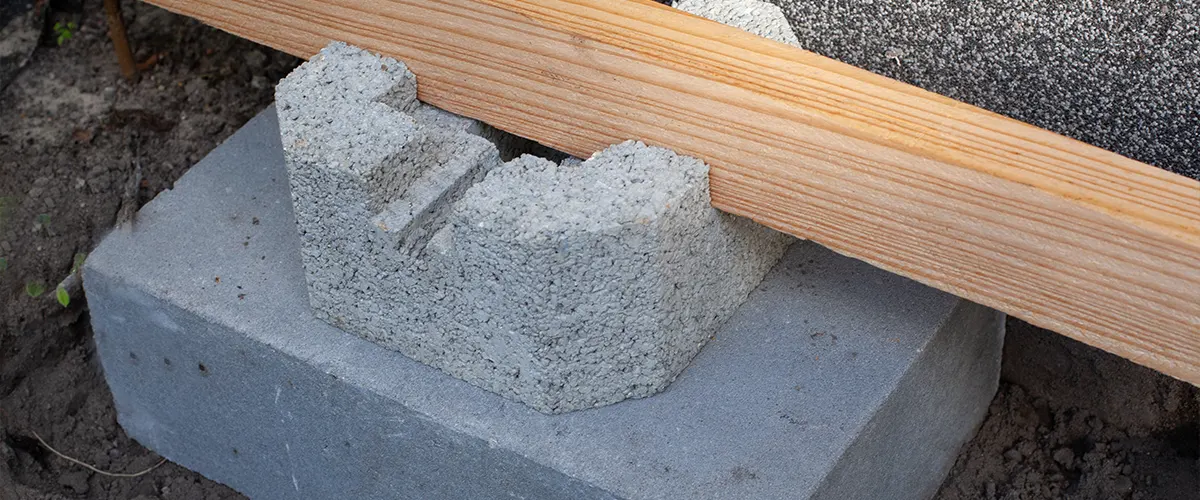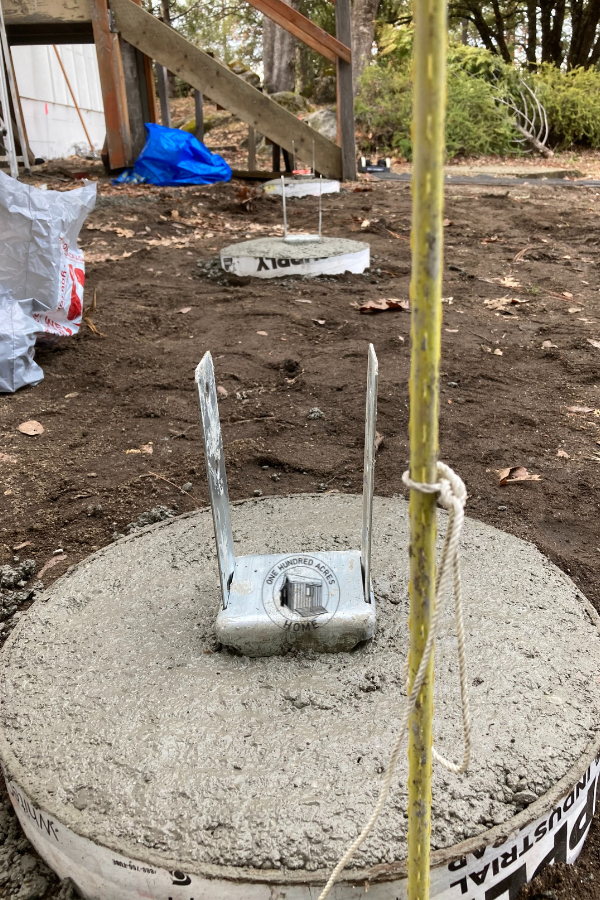Picking the Right Deck Footings for Security and Sturdiness
The durability and safety and security of your deck depend heavily on the type of grounds you choose, as they provide the vital assistance and stability to endure the examination of time. In this conversation, we will check out the numerous kinds of deck grounds, take into consideration the crucial variables to weigh when making a decision, and dig right into the pros and disadvantages of different choices.
Sorts Of Deck Grounds
There are several kinds of deck grounds that can be used, each offering distinct advantages and considerations. One typical kind of footing is the concrete pier footing. These footings include a cylindrical opening filled up with concrete, which provides a solid foundation for the deck messages. Concrete pier footings are fairly simple to mount and provide outstanding security, making them a prominent selection for lots of deck tasks.
These grounds are set up by screwing them into the ground, which develops a protected structure for the deck. They also enable for easy adjustment and progressing of the deck if needed.
Alternatively, some building contractors select precast concrete footings. These grounds are made from resilient concrete and can be found in different sizes and shapes to fit different deck layouts. Precast concrete footings are hassle-free to mount and offer a secure base for the deck structure.
Ultimately, one more alternative is the post-in-anchor ground system. This type of footing entails driving a metal support into the ground and affixing it to the deck message. It offers versatility in regards to positioning the deck messages and appropriates for decks with lightweight structures.
When picking the best kind of deck footing, it is necessary to think about variables such as soil problems, deck load, and neighborhood building ordinance (Deck Footings). Consulting with an expert contractor or structural designer can assist make sure the ideal footing is selected for a secure and stable deck
Elements to Think About When Picking Grounds
When selecting the suitable grounds for a deck, it is important to meticulously consider different aspects such as dirt conditions, deck tons, and adherence to regional building ordinance. These variables play a substantial role in ensuring the security and resilience of the deck structure.
The type of soil on which the deck will certainly be constructed determines the type of grounds called for. On the various other hand, decks constructed on clay or large dirts might need footings that can accommodate the dirt's tendency to expand and contract.
An additional crucial element is the deck load. The weight of the deck, consisting of the materials used and any kind of possible online loads such as furnishings or gatherings, need to be taken right into account when selecting footings. The grounds have to be created to birth the weight of the deck and distribute it evenly to avoid any structural problems or failings.
Finally, adherence to local building regulations is extremely important. Building ordinance vary from area to region, and it is vital to follow the specific needs established by the neighborhood authorities. Deck Footings. These codes make sure that the deck is built safely and fulfills the needed standards for architectural integrity and load-bearing ability
Concrete Footings: Pros and Disadvantages

When made use of as the foundation for a deck,Concrete footings use numerous advantages and drawbacks. On the silver lining, concrete grounds give outstanding stability and longevity. Concrete is a stiff and strong product that can support heavy tons and hold up against various climate condition. It also has a lengthy life expectancy, making it a dependable choice for long-lasting use.
An additional benefit of concrete grounds is their adaptability. They can be put right into various sizes and shapes to accommodate various deck layouts and configurations. Concrete footings can be customized to fit the certain needs and requirements of the deck structure.
However, there are also some downsides to making more tips here use of concrete grounds. One major drawback is the cost and labor involved in their installment. Concrete grounds need excavation and commonly need the support of heavy equipment. This can boost the general cost of the deck job and may call for expert support.

Helical Piers Vs. Sonotubes: Which Is Much better?
In taking into consideration the structure options for a deck, the comparison between helical piers and sonotubes is vital in figuring out the premium selection. Helical piers, also called screw stacks, are steel shafts with helical plates affixed to them. They are turned right into the ground making use of hydraulic equipment, giving a durable and stable foundation for the deck. On the other hand, sonotubes are round types made of cardboard or fiber product that are full of concrete. They are placed in a hole dug into the ground and provide support for the deck.
When it pertains to stability and longevity, helical piers have the top hand. The helical plates on the piers create a solid grip with the soil, shifting or avoiding any kind of activity of the deck. This is specifically helpful in locations with unsteady or changing soil conditions. Sonotubes, on the other hand, rely solely on the concrete filling for stability, which might not use the exact same degree of strength and resistance.
In terms of installment, helical piers are relatively easier and faster to mount contrasted to sonotubes. The hydraulic machinery made use of to twist the piers right into the ground ensures a quick and reliable procedure. Sonotubes, on the other hand, need excavating holes and pouring concrete, which can be lengthy and labor-intensive.
Furthermore, helical piers are an even more versatile option. They can be made use of in numerous soil conditions and can be changed or enhanced if required. you can check here Sonotubes, on the other hand, might call for added assistance, such as rebar, in particular dirt conditions or areas with high lots requirements.
Choosing the Right Footings for Your Deck's Dimensions
For ideal architectural honesty, it is vital to meticulously select the suitable footings that line up with the measurements of your deck. The measurements of your deck, including its size, size, and elevation, play a substantial role in figuring out the kind and size of grounds required.
When selecting footings for your deck, it is necessary to think about the load-bearing capability of the soil. The weight of the deck, combined with the weight of any type of furniture or people on it, exerts a significant force on the grounds (Deck Footings). For that reason, it is vital to select footings that can sufficiently support this weight without shifting or sinking over time.
Bigger decks with higher measurements need bigger grounds to provide enough stability and assistance. The visit this website shape of the grounds, whether they are rounded or square, depends on the layout and design of the deck.
Conclusion
To conclude, choosing the ideal deck footings is essential for making sure stability and durability. Aspects such as the type of footings, the deck's measurements, and the advantages and disadvantages of various options must be considered. Concrete footings use strength and long life, but may be extra expensive and lengthy to install. Helical piers and sonotubes have their own benefits and negative aspects. Ultimately, picking the appropriate footings for your deck's particular needs is important for a effective and durable framework.
These footings consist of a cylindrical hole filled up with concrete, which supplies a strong foundation for the deck articles. Concrete pier grounds are fairly simple to set up and use superb security, making them a preferred selection for many deck tasks.
Precast concrete grounds are hassle-free to mount and give a secure base for the deck structure.
It provides versatility in terms of positioning the deck posts and is suitable for decks with light-weight frameworks.
Concrete grounds provide a number of advantages and drawbacks when used as the structure for a deck.